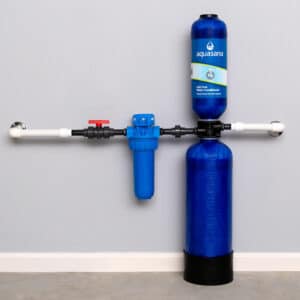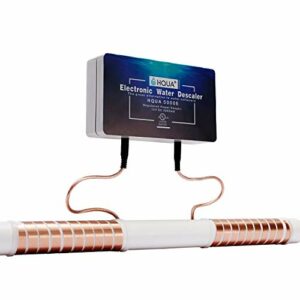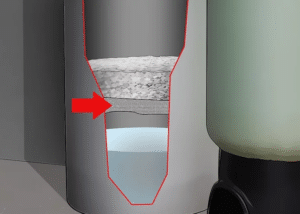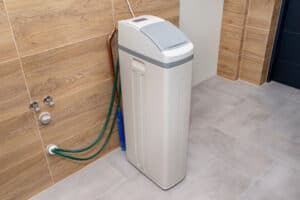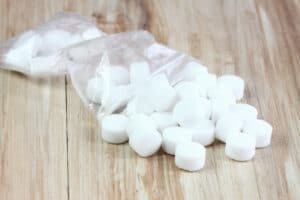Water softeners work by removing water-hardening ions. When hard water flows into the softener, water ions attach to the resin, and soft water flows out. This process repeats until hard water ions saturate all the resin. When this happens, the water softener regeneration process begins. So, what is water softener regeneration, and how does it work?
What Is Water Softener Regeneration?
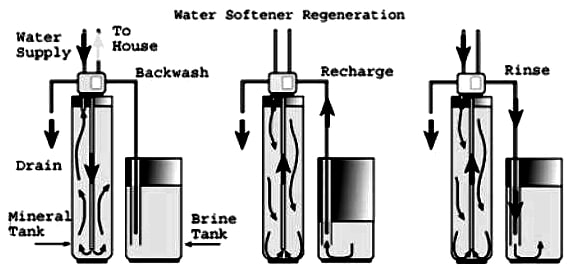
Water softener regeneration occurs when the resin in a water softener is cleaned with brine to remove hard water ions. The process happens cyclically every week or less often, depending on the water usage. Without the regeneration process, the water softener would gradually lose its ability to soften water.
Water softeners have a reserve capacity of 20%-25%. Therefore, the water softener triggers a regeneration cycle when the resin beads have been saturated between 75% and 80%.
To understand the regeneration process, you must understand the components of a water softener. Water softeners are composed of:
- A mineral tank with resin beads – These beads soften hard water as it flows into the mineral tank by trapping ions from the hard water. As the beads soften water, they become saturated, reducing their capacity to soften water.
- A control valve that tracks the amount of water flowing from the mineral tank to your house
- The brine tank, which holds a concentrated salt solution
The control valve facilitates the flow of brine (concentrated sodium or potassium solution) into the mineral tank to clean the resin beads.
There are two types of water softener regeneration:
- Time-initiated regeneration
- Demand-initiated regeneration
Time-initiated Regeneration
Water softeners with time-initiated regeneration have a programmed interval after which the regeneration process begins.
Regeneration happens daily or weekly, but you can program the time based on your water usage. The process often initiates at night when you’re less likely to be using water.
Water softeners with a time-initiated regeneration cycle have a low salt efficiency as water usage differs daily. Some time-initiated water softeners can override the timer when the resin bed (mineral tank) reaches a specific saturation limit.
Time-initiated regeneration cycles can start even when the resin has yet to be saturated. For instance, if you have a 24-hour regeneration interval and do not use any water in 24 hours, the regeneration cycle will still occur, which can be wasteful.
Demand-initiated Regeneration
Water softeners with demand-initiated regeneration cycles begin the regeneration process when the softener has processed a certain volume of water. These systems can initiate regeneration at any time once the capacity is depleted.
Most water softeners that use demand-initiated regeneration have an extra softening tank. The additional tank starts working while the other regenerates, minimizing the hard water reaching your house.
The Water Softener Regeneration Cycle
Water softener regeneration in both time-initiated and demand-initiated water softeners follows five main stages:
- Filling
- Brining
- Brine rinse
- Backwash
- Fast rinse
Filling
Water softeners have a salt storage container (the brine tank). This container fills up with water to form a brine solution. The brine cleans the resin beads.
The brine tank must always hold enough salt to ensure a successful regeneration process. Check the brine tank at least once every week to ensure it has the recommended salt level for continued regeneration and water softening.
Brining
The brining stage involves filling the mineral tank with the brine solution from the salt storage container (brine tank). The brine solution removes the hardness ions from the resin beads, leaving them charged for the next softening cycle.
The brining process happens up-flow or downflow depending on the water softener. In up-flow regenerating water softeners, the brine solution is pushed upwards from the bottom of the mineral tank. In contrast, in a downflow regenerating water softener, the brine solution flows from the top of the mineral tank to the bottom.
In up-flow brine systems, the resin at the bottom is super regenerated. During softening, the resin beads remove any hard water ions that could have remained.
Brine Rinse
The brining process continues until a certain level of brine has been used in regeneration. Once this happens, the brine valve closes. Water flows into the mineral tank draining the minerals and brine into a drain.
Backwash
After the brine rinse, water flows fast and upwards into the resin tank to flush out any sediments and dirt from the mineral tank.
Fast Rinse
Water flows down the mineral tank during the fast rinse stage, taking any leftover brine through the resin beads. After the fast rinse, the water softener resumes the normal softening cycle until the initiation of another regeneration cycle.
The regeneration cycle takes about two hours to complete.
How To Regenerate a Water Softener
When installing a water softener, you should determine the hardness level in your water, your home’s consumption, and your water softener’s capacity. These metrics help you pinpoint the best regeneration cycle.
Check the manufacturer’s recommendations before you set the regeneration cycle. The manufacturer will have the recommended settings based on the water hardness levels and consumption.
In most water softeners, a regeneration cycle is required after between 30-60 softening cycles or after 12,000 gallons.
When you have the correct settings, your softener will regenerate automatically. However, you may need to regenerate your water softener manually. Some instances that call for manual regeneration include:
- Your water softener fails to regenerate automatically, resulting in hard water
- The brine tank has formed a salt bridge. This bridge prevents the regeneration cycle from occurring correctly
- You have an empty brine tank
- Your water softener is stuck in a regeneration cycle
- You are using more/less water than before
Some of the critical settings to change include:
- The regeneration cycle frequency – How many times per week should the cycle run?
- The regeneration cycle time – When should the regeneration occur?
- Regeneration cycle length – How long should the regeneration process last? Check the manufacturer’s recommended cycle length
- Salt dosage
How Often Should Water Softener Regenerate?
The regeneration frequency depends on the type of water softener. Most regeneration cycles occur daily, every 2-3 days, or weekly.
The frequency depends on the water hardness level and your household’s water usage. Other factors include:
- The resin tank’s capacity
- Iron levels in the water (water with higher iron levels requires more regeneration cycles)
- The type of water softener (single-tank water softeners regenerate more frequently than dual-tank water softeners)
- The type of control valve in your water softener – Time-controlled valves can be set to a specific interval, while demand-initiated control valves begin a regeneration after you’ve spent a particular volume of water.
- The age of your water softener
Water Usage During Water Softener Regeneration
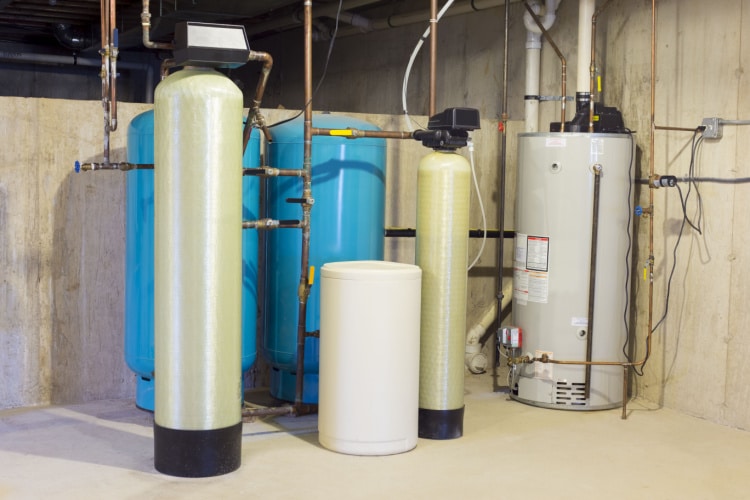
The regeneration cycle consumes about 20-25 gallons of water. Still, it can be as high as 65 gallons depending on the water hardness in your area and the size of your water softener.
While this may sound like a lot of wasted water, soft water saves you from the costs of fixing the adverse effects of hard water, such as repairs to clogged plumbing or damaged home appliances.
Can You Use the Water Softener While It’s Regenerating?
It depends on the water softener you have. Dual-tank water softeners are optimized to provide soft home water while another tank regenerates.
With single-tank water softeners, you cannot have softened water during the regeneration cycle. Your home will still access hard water.
Final Thoughts
Water softener regeneration is an essential process in water softeners. The resin beads are cleaned during the process, preparing them for the next softening cycle. Regeneration cycles run at a predetermined interval depending on the water softener size and usage. These cycles last about 2 hours and use about 20-65 gallons of water, depending on the size.

